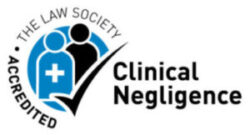A recent report from the Royal College of Pathologists has found that just 3% of histopathology departments say they have enough staff to meet the growing demand for their services.
 The 2017 survey of UK histopathology departments, of which there was a 73% response rate, saw the following themes emerging:
The 2017 survey of UK histopathology departments, of which there was a 73% response rate, saw the following themes emerging:
- Current staffing levels are too low
- Demand for histopathology services is increasing and an increase in screening programmes is extending the demand further
- Available general pathology placements at medical schools have decreased
- There is a cost to both the patient and the trust where staffing levels do not meet demand
What is a histopathaologist?
In simple terms, this is someone who studies tissue samples to look for signs of cancerous cells. This work is vital for ensuring patients to receive an early diagnosis if they have concerns they are experiencing signs of cancer.
There are concerns around staffing levels, with one respondent advising that in a department which should have 8.5 consultant histopathologists, there are just 4.5, meaning that either staff are being overworked, or there are delays for patients waiting for a diagnosis, and in most cases there is a combination of the two. A product of an environment such as this, means mistakes are more prone to happen, and in such a crucial area, this could have a devastating impact on a patient’s life, resulting in the need to make a cancer misdiagnosis claim.
One of the ways departments are dealing with the shortage of staff is by employing locums, but this increases the financial burden on those departments.
An alternative that is happening in 45% of the departments who answered the survey, is the outsourcing of the work, which as well as increasing the cost to the department, can also contribute to delays in diagnosis.
With the public being urged to watch out for early signs of cancer, with tv and media campaigns being used to highlight the issues, the workload for histopathologists is steadily increasing. As early detection would provide a higher chance of survival for the patient, so to the cost of treating that patient would be reduced as earlier detection would in most cases lead to less invasive and costly procedures.
The problems around staffing levels aren’t set to get any better with a retirement crisis looming as a quarter of all histopathologists are over 55. At the other end of the scale, there has been a reduction in the number of academic pathologists meaning medical students may only be touching on the subject and so don’t feel they have a connection that pulls them to want to study the subject in more depth.
Another concerning feature identified by a case study in the report, states that development and innovation are lacking. This is in part due to the understaffed departments having to sometimes cover the work of 2 people. A lack of innovation means the speciality as a whole is moving forward at a slower rate than those that are easier to recruit for.





